In 1981, I attended computer school in the Marine Corps at the Naval Air Station in Meridian, Mississippi. It was my first encounter with a computer, and what a sight it was! The UNIVAC (UNIVersal Automatic Computer) 1218 Military Computer was a marvel. This system, along with the IBM card reader punch interpreter (CRPI), four model 1240 mag tape drives, the Hetra 3300 high-speed printer capable of 600 lines per minute, and a vast 7-track magnetic tape library, placed us in what felt like a pioneering environment. Despite being from the 60s and considered old compared to the Navy’s newer Honeywell and DEC systems, the UNIVAC was still a formidable machine with 4k of memory (expandable to 16k), costing around $100,000 and weighing nearly 800 pounds. Fully equipped with peripherals, the system’s total cost approached $400,000.
When the UNIVAC 1218 was new in 1964, it was advertised with features like a core memory cycle time of 4 microseconds and powerful I/O capabilities, which made it capable of processing large quantities of real-time data. By 1981, this was still impressive but a bit antiquated. In the Marine Corps, we often made the best of hand-me-down technology while the Navy and Air Force enjoyed bigger budgets for the latest equipment.
Our UNIVAC systems were critical for maintaining inventory parts for combat aircraft like the A-4 Skyhawks, A-6 Intruders, and CH-46 helicopters, among other tasks. These systems were essential for the entire Aviation Group Supply Squadron, ensuring that the planes remained operational. We called it SUADPS (Shipboard Uniform Automated Data Processing System).
In 1982, photos were taken in the ADP computer vans at the H&MS-12 Marine Corps Air Station in Iwakuni, Japan. The military occupational specialty code for computer operators was 3073, and the technician’s code was 5982. I believe the programmers’ code was 4044, though I might be mistaken. The system’s mean time between failures (MTBF) of over 1,000 hours was somewhat optimistic, as the CRPI often required attention (sometimes a swift kick).
I can almost remember the reboot sequence needed to restart the system. The right toggle switches had to be pressed in the correct order, causing a hundred LED lights to flash before the teletype began printing power-on-self-test code on a large roll of yellow paper. Monitors and hard disk drives were nonexistent; input came from IBM punch cards and mag tape, processing involved sorting on mag tape, and output was on mag tape or six-part carbon paper. We printed boxes of paper and spent hours separating the six copies from the carbon films.
We had a key punch group that meticulously punched holes in 80-column cards based on programmer instructions. Occasionally, a tray of punched cards would spill, necessitating a redo, which was a dreaded scenario. In the photos above, you can see Sgt. Barnes, wearing a John Cougar t-shirt in the key punch area.
Despite their age, these systems could still run one game: Adventure. Written in 700 lines of Fortran, it was the first computer adventure game, famous for the phrase “You are in a maze of twisty little passages, all alike.” or “xyzzy; nothing happens”. Who else remembers this?
Operating a large 1960s UNIVAC computer was challenging. Some jobs took days to complete, requiring meticulous shift turnovers where you’d explain progress, hand over cleaning supplies, and wish the next shift good luck. Breaks for meals, like mid-rats for eggs and potatoes, were a cherished routine. A normal eight-hour shift involved updating the tape library, managing printouts, and logging these tasks. Noise-canceling ear protectors were a must due to the loud systems, and heavy field jackets were worn in winter due to the A/C requirements. When problems arose, technicians were called in, and their expertise with oscilloscopes and soldering irons was invaluable.
We had a way to make the UNIVAC play the Navy Hymn “Anchors Away” on a transistor radio. Who remembers that?
After a few years with the UNIVAC 1218, we transitioned to the newer Honeywell DPS-6 systems, which had Winchester hard drives and real CRT monitors. This upgrade felt revolutionary to us, akin to cavemen discovering fire, despite being modest by contemporary standards.
These experiences instilled a deep appreciation for data processing, keen troubleshooting skills, and a strong sense of camaraderie. The friendships forged in the Marine Corps while working on these UNIVAC systems are among my most cherished, and I think of my comrades fondly every day. The memories and skills gained are irreplaceable.
~Cpl. Wally Beddoe
UNIVAC 1218 Details
The UNIVAC 1218 Military Computer, manufactured by the UNIVAC Division of Sperry Rand Corp., was designed for general-purpose computing and various military applications such as missile guidance, logistics, and digital communications. It featured an internal binary system with 18-bit words and instructions, capable of fixed-point arithmetic. The machine’s memory was made of magnetic cores, with a cycle time of 4 microseconds, and it had extensive I/O capabilities with 8 channels, each able to handle multiple units.
Key features included programmed parity checking, real-time interrupt handling, and compatibility with Naval Tactical Data System peripherals. It was designed to withstand harsh operational environments, including shock, vibration, and radio frequency interference, making it suitable for deployment in various military scenarios.
The system’s purchase price ranged from $96,000 for a basic setup with 4k memory to $127,000 for a 16k memory configuration. Additional peripherals like mag tape systems, high-speed printers, and card readers/punches could significantly increase the overall cost. Training and maintenance support were provided by UNIVAC, ensuring users could operate and maintain the system effectively.
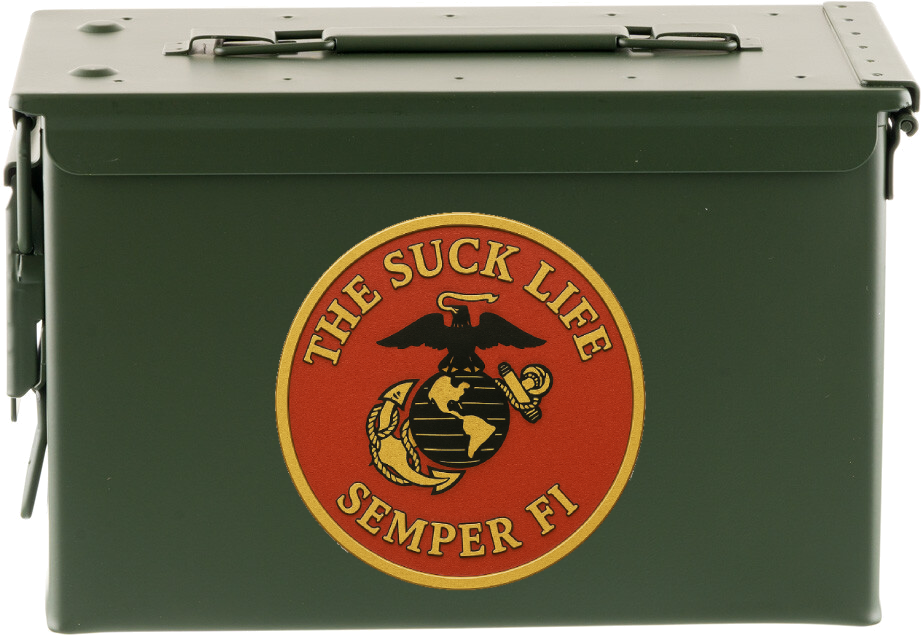
Ads suck. This site is 100% ad-free and reader-supported.
If this article added value to your day or meant something to you, toss a couple bucks in the ammo can to keep us in the fight. Thank you.



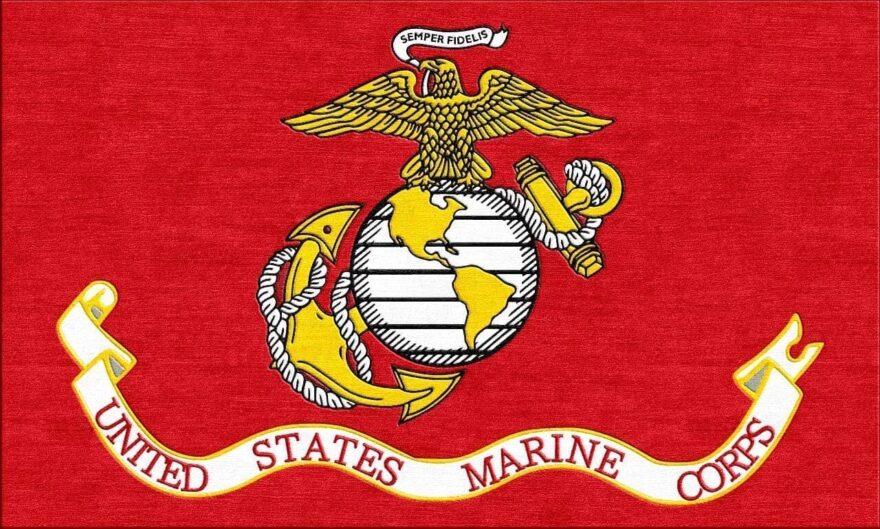
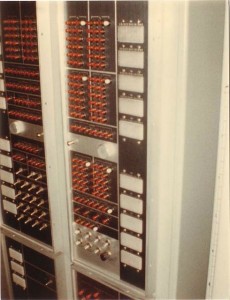
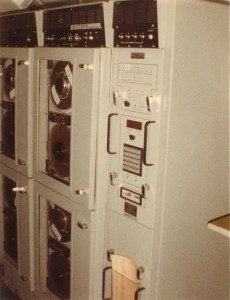
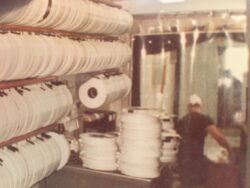
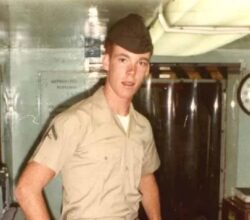
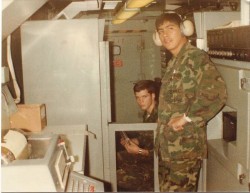
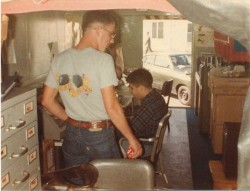
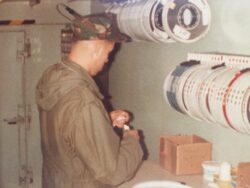
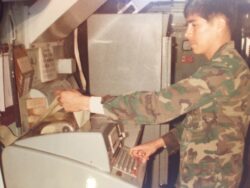
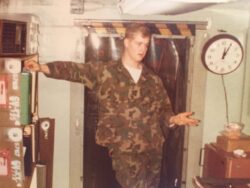
 Semper Fidelis
Semper Fidelis
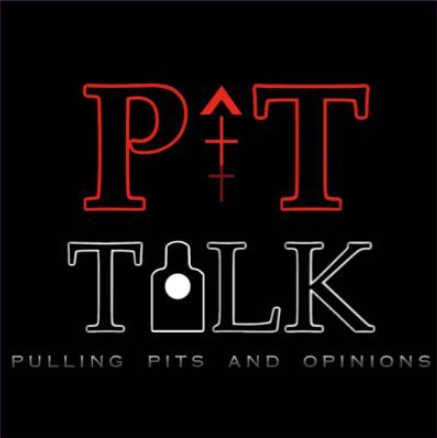
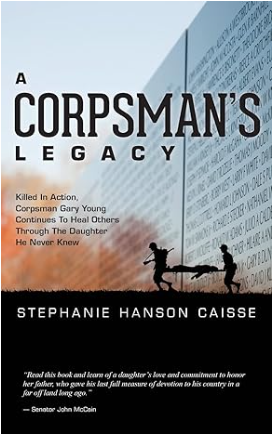
Hello. I was MOS 5982 Marine at Mare Island in 1981. I was top percentage student in my class for all students for the Univac training. I saw in a building close to the training classrooms where they posted the top students for prior years. I never knew if my name was posted on the plaque or if that had stopeed. My testing was at 96%+ and it was a great experience. I had found the area of training/expertiece that was the fit for me. Now, 2022, I have been in technology for 40+ years, I look back at Mare Island as a life great experience. Does anyone know of the training building or top studen plaque that I had mentioned. Curious.
Greetings Marines! I too am quite “late to the game” as far as this post goes, however, I served in the Navy as a DS on the USS Forrestal and USS Fulton. I was originally an NTDS guy but cross- trained into ADP in 1983 and went to the yards in Philadelphia on the Forrestal. From what I was told by a tech rep, I am the guy who retired the last active duty, shipboard, CRPI in the Navy. Do I know for a fact that is correct? Hell no, but I sure like to repeat it as though it is! I’m still in I.T. and the 2nd oldest techie in our office. I wanted to show some of the kids working here what the stuff I did looked like and google brought me here. Thanks for the memories!!
Where can I post photos? I have plenty from “C” School on Mare Island Naval Shipyard in Vallejo from 1976. Many of them had my classmates, Marine and Navy. Tolliver and Herd… remember me?
It’s hard to believe that I didn’t take pictures of the workers and work surrounding the U-1500! I had a camera and every Marine 3073 and Navy DP that ran this system knows we all had many, many hours of sitting around waiting for the teletype to sound off. I’m sure all of you remember 18 hours print runs or coming in for your shift only to find out that your SUADPS update was farther behind now than it was when you last left. Even more fun later, when I became a Navy Corpsman and doing Occupational Health histories finding out that in addition to using denatured alcohol the 1,1,1, Trichloroethane we used to clean the MTU were both hazardous and should only be handled with gloves.
MWHS-1 ADP (Deployed to the Data Processing Service Center) Subic Bay PI 1979-1981
USS
Midway (CV-41) S7 Division Yokosuka Japan (TAD multiple time while
Midway was in wet or dry dock) The computer vans and our Conex box were
setup on Pier 9. We sure made a LOT of trips on and off the ship. In addition to running SUADPS, we got to run payroll for the Midway using SJUMPS (Shipboard Joint Uniform Military Pay System). DK1 Bautista would come down with big boxes of blank checks to run through our 1569 printer!
Final Marine duty station was MAG 14 at Cherry Point.
About 2 years later I was in the Navy as an AK at NAS New Orleans and guess what appeared in our warehouse. My old friend U-1500. I never found out where it was headed. I’d like to think that it’s still running in some 3rd world Navy or Marine Corps supporting our old aircraft. I tried to stay in touch with the Marines there but I was no longer part of the Green Machine and I didn’t get to learn much about the Honeywell RT system that replaced the U-1500, but In this new age of amazing computer technology where we have way more computing power in our phones than we could have ever dreamed of. I’d sure like to show some of these “young” folks what it was like to have to “operate” a computer!
I hope some of you reading this were more thoughtful than I was in my youth and took some good pictures and would be willing to share them here or even on Facebook.
Cpl Kris R. Wharton
3072/3073 USMC
1978-1982
MARSOC Class 901
March 1979
NAS Meridian MS
>I was a Navy Data Systems Tech from 78 – 84, trained on the 1500 system in C-School at Combat Systems Technical Schools Command, Mare Island and would up deployed as the only DS on the USS San Diego AFS-6. There were many tales of the Crippy, she was a fickle beast indeed and the object of many 30+ hour marathon troubleshooting sessions.
On my first Med cruise we visited Egypt and I made a trip to the see the Great Pyramid of Giza. While there a snagged a pyramid shaped piece of rock from the pyramid itself. Back on the ship I glued it to the top of the CRPU. Figured I needed all the help I could get rasslin with that monster.
DS2 Paul Jordan
Enjoyed your discussion re: UNIVAC
Never crossed paths as I was 4034 w/ IBM S/360 mainframes (‘73 – ‘77) and our FASC shared stations such as Cherry Point.
Can certainly commiserate with peripheral devices and job failures.
After 50 yrs in IT I’m proud of our small, tight field of early adapters.
USMC 74-81 3072 Aviation Mechanized Supply Meridian Ms
Beat on UNIVAC 1710/1810 Keypunch machine most of your. Been behind a keyboard every since. Good friend and roommate computer programmer. SEMPER FI forever brothers and sisters forever
Semper Fi, Marines. I trained on the AN-UYK 5 system at the Mare Island sub base in Vallejo, California back in 1976 and became a 5982 MOS ADP technician. I found out then that there were only 9 bases in the world that I could be stationed at. I graduated Honor Man and so was offered my choice of East Coast or West Coast duty stations. I chose West Coast and was stationed at MCAS Belle Chasse, Louisiana… West Coast of the Mississippi River. That was the start of a pretty great career in IT for me. OORAH!
SEMPER FI forever brothers. 3072-Aviation Supply…73-81. Beat on keypunch machine most of service. Best friend a programmer.
1976 – 1979 Cherry Point, Mag-14 (Pvt – Sgt); Then El Toro until 1981 (Sgt); Okinawa until 1982 (Sgt, picked up SSgt).
SUADPS operator, COBOL programmer. Thanks for the memories.
This brought back a lot of memories. I was a Navy DP on the USS Enterprise in the early 80’s working the exact same system. When you described the q tips and alcohol, I knew exactly what you were talking about. I was in the middle of a big SUADPS update when I was getting 06 errors in the middle of the MRF segment. I had to step through this segment while dousing the read write heads with isopropyl. It was either that or rebuild the MRF (something you really didn’t want to do).
Don’t get me started on the CRPI. The bottom had so many dents from us kicking it out of anger after cards got jammed. We had an Allen wrench at the ready to tweak the tension rollers.
We used the teletype as our alarm. We could tell what was going on just by sounds it was making. Same with the printer.
Thanks for the memories.
Hey…saw this just today. Anyone out there part of MACS2/MAC7 1971-1972. I was a 5977. Looking for anyone who was there.
Nobody can possibly understand what a computer was before the PC. These pictures and stories are great. I had forgotten my adventures with 1500 system until I read these. My training was at NTC San Diego, 1973, MOS 4044 Prog/Opr. Got this assignment right out of boot camp. No one could explain to me what a 4044 Prog/Opr was. My once powerful and clear drill instructors became mumbling fools upon trying to come up with an answer.
First duty station MAG-36, MCAS Futema, Okinawa. Many good times there. First job I learned was to run the base duty roster. First instruction? Pull the cards for everyone in ADP. Run the list. Last instruction? Replace the cards for everyone in ADP. Oohhh what power, no one ever caught on. Our system was nick named Igor and the system operators were called KOI (Killers Of Igor). Also our unofficial log book was titled KOI.
From there it was on to El Toro for 2 years. The operators found a fix for the card reader when it had reading issues. Open the lower door to all the transistor cards, turn a “can of air” upside down (it would spray a cold fog)and spray it into the bank of cards. Read errors would disappear immediately. The techs would get mad because this “wasn’t fixing the problem” but it got us through the night.
While at El Toro I was volunteered to be on the team to create the deployment manual for computer system. We tore the vans down, packed them into C130’s, flew all the way to San Clemente Island, and set them up again on the air strip. Doing everything about 5 times and taking pictures all the while. If any of you have sen this manual, that would be my finger pointing at the part being described.
Thanks for all the pictures and stories. I had no idea you guys were still using that system more than 10 years later.
Sgt. Steve Lafferty
1972-1976
Has anyone heard anything from Goldie (Dumbkouski)? I worked with him first at MAG-26 in `73, then again when I went to Meridian as an instructor in mid-80.
Pretty neat seeing all this. I pretty much know you all. I went through Meridian February of 1981. SOC in June. Even went back as instructor in January of 1985. N
Ken and his wife. Rusty Eaton, Dale Roth, I became course supervisor and I too had to do a major rewrite. Seems like forever ago.
Ret. GySgt Mark E Greiner
Okay, I’m a little late in posting here . . but better late than never.
Want to say hi to all you guys from Iwakuni and CSTSC . . . SSGT Smith, Ken Majors, Rod, Philo, Hawk, Lockridge, Barney, Juan Velasquez, Levi, Johnny (Pops) Reveille, Mr. O and many more.
I always loved when Ken Majors would answer the phone “Sgt Majors.” Whoever was on the other end always straightened up.
The CRPI could drive you mad. More than one time I had to find someone in the airframes shop to fabricate a part that was no longer available.
More later . .
SGt. Ski
Semper Fi
Cpl. Beddoe:
Thanks for this posting, and your e-mail response. I remember you now. You were the kindest and the nicest one.
Yes Tustin California ! I also remember Q, and our supervisor Sgt. Thompson ,I believe. He made me work on Holidays…How about that spanish fella (Cheppa? nick name)
We had to drive to El Toro every night, because one of the Miltope tape drive could not write. That one segment of the program required writing to all 4 tape drives, only for 3 seconds. I recall that program was known by the name of MRP.
Yes I remember….
Kicking the card reader, because of it constantly jamming cards behind the removable glass cover; trays of 1348M (Mechanized) cards falling off the teletype desk, due to vibration of the monstrous card reader; Loading VFU (tape) on the printer; 3rd shift log started with 00:01 PVT Kassoo assuming graveyard yard shift duty.
One day one of the fellow marines (Can’t remember who it was), brought his paycheck, which was also the same size as 1348M cards, (actually it was a 1348 mechanized paycheck card) to run it through the small card readers, which could actually print, in a print mode , to determine what his pay check card holes meant. Well, instead of the reader in read mode, it was in punching mode ! Ouch…. His pay check came out the other end with bunch of extra holes in them. I remember going to the bank (or a credit union) with him, and they cashed his check with no problem.
I am searching for Joseph Deruvo, / Sgt Barnes (Barney)/ with no luck. If anyone has their contact please relay the message.
Thanks
Bilal Yaqub Kassoo (AKA: Bill Jacob Castle)
Those of you who went through Meridian from mid 80 to mid 85 may remember me. I started out as a new instructor and ended up as the Course Supervisor/Curriculum Developer. I was there when we rewrote the class for the DPS-6. Me, Whitehead, Roth, and Ken Majors listed above. We were all 3073’s at that point (except Ken). We were switched over from 4044 to keep us from opting into the 4000 field.
I took my initial training at NTC San Diego as well….Sept – Dec, 1972…the third class to go through. There were never more than 144 of us 4044’s in the Marine Corps. I’m not sure how many 5982’s, but usually only two per site.
I also started at MAG-26…at that time there were only two set up, MAG-26 and MAG-11 at El Toro. In July of 73 I was transferred to MAG-11 for a brief period, then went on to help set-up MAG-13’s system, and then on to MWSG-37.
Then you were one of my students. I was Course Supervisor of the ADP School at Meridian when we got the DPS 6. Rich Whitehead, Cpl Roth,Ken Majors, and myself had to rewrite the curriculum. It was a major battle to get the “powers to be” to let us include the new capabilities the DPS offered. They simply wanted a curriculum in how to handle the “emulation of the U1500 and SUADPS”.
Great Pix, Brings Back Memories, Was Stationed with MAG-12 from 85 to 87. Worked on those Mag Tape drives pictured. Was there when they installed all the “Dumb” Terminals out in Receiving and down in RMS and out in CMS and all around so inventory was closer to “Live” than waiting for Data Entry to enter all the daily transactions. Was there when they condemened the “Van” at the center of the ADP complex that basically served as Office where the Fridge and Coffee pot was located and it had to be swapped out. Fun Times Over there. As For Bilal Kassoo, that was one smart fellow, he wrote quite a nice little mag tape library program to keep track of all the mag tape reels.
I was in the first full class of 3073′ that started in Feb 79.
it’s amazing to me that good pictures of the U-1500 system
are so hard to find.
I guess we were so busy working that we just didn’t take the
time to take pictures.
I liked the old Miltope 7 track drives, we like most of you had
races to see who could load the tapes the fastest.
my experience was unusual for a Marine at that time because
I wasn’t assigned to a MAG or H&MS, but as a mobile unit in
1st MAW out of Okinawa, but stationed in the Philippines,
under the NSD in the DPSC.
We moved those vans and a CONEX box to Japan and
back 3 times before the end of 81, supporting S7 Division the
on the USS Midway.
I never did any Marine support until my last 6 months in the
Corps at Cherry Point.
Later at NAS New Orleans I saw the whole U-1500 system
sitting in the supply warehouse waiting for disposition. I always
wondered where it ended up, probably DPDO.
Like many of you I struggle to explain what it was like to
be a computer operator to children, and grandchildren who
carry much greater computing power in their pockets everyday
than we had in 2 packed C-130’s
Wow…that brings back some memorys. I was in the first class for the Honeywell DPS-6 in Meridian, MS I went to my first duty station which was in New Orleans, MRASTU to do training for the Reserves. To my surprise I beat the Howeywell there and had to working with the Old Breast for 6 months.
I remember those days, and broguht back some good memories. I remember ski,Barney (Sgt. Barnes) Rodriguez. Rodriguez, Are you the same who had a little bicycle incident? Do you all remember Edward Hudson? I just got hooked up with him a year or so ago….
Hey Marines,
Thanks for the walk down memory lane. Loved the CRPI and the old Miltope,s. Served at H&MS-32 80 – 83, WESTPAC MOB ( Installing DPS6) out of H&MS -36 in 83/84 Taught at CSTSC UYK-65 from 84 – 86.
Semper Fi,
SGT. Finnerty
[…] for a computer repair technician. Our H&MS-16 shop desperately needed another 5982 to support our UNIVAC computer systems to keep the Marine Sikorsky and Boeing helicopters […]
Hey SSGT Majors here,
Thanks for the memories about Meridian, MS. I WAS the technician there and we had a good time keeping things running during class. We would time the maintenance cycles for between classes. There are more than a few "games" for the 1218 and the CRPI. Remember the music, flight of the bumblebee, the digital clock on the 1218's registers, or punishing the CPU with the Square root program?
I was in Meridian when we changed out the 1218 for the Level 6. We thought we were in the big time!
Semper Fi!
>Yo Marines,
I was at MAG-29 in ADP from 79-82. I came aboard as SSgt Ken Zahrt left there! Our CRPI base plate was dented from being kicked so many times also. One of our persoanl goals as operators there was to run the "perfect update", error free. After much prep, cleaning tapes and such, and with much good luck I was able to run the first one known to MAG-29 at that time. Finding this blog has brought back old memories. SSGt Zarht whatever happened to Baron?
Semper Fi
SSGt Jim Clayton
>Thanks for the memories!
I went through training at NTC San Diego in 1973 and was a 4044. My first duty station was MAG-26, MCAS New River. MAG-26 was the first MAG to receive the AN-UYK-5(v), getting theirs in 1972. I served at MAG-36, MCAS Futema, Okinawa and MAG-29, MCAS New River, from which I left the Marines in 1979.
While stationed in Okinawa ('76-'77), I made a trip up to Iwakuni to run some jobs while we were down hard for several days, so I have actually operated your machine.
While at MAG-26, we actually deployed during Operation Solid Shield 1975 to a field location, the only time I am aware of in which a unit actually took an AN/UYK-5(v) into the field. It ran better in the field than it did on base!
Yes, the CRPU was truly a touchy maintenance hog. (CRPU, as the interpreter function of the original CRPI was removed before any Marine units were deployed). I can remember, especially on the one at MAG-26, that at each shift rotation, the on-coming tech would curse the tech from the previous shift, as each one had his only special way of setting the CRPU up, which, of course, never worked for the next guy.
Outside of the CRPU, the system was pretty much rock solid, as long as you kept your tapes clean! Those were good years.
SSgt Ken Zahrt, 4044, 1973-79
>Posting this forward:-UNIVAC Type U1500 system – Based on the Univac 418 design, the 1218 came with COBOL, very necessary for the software development. This system used for inventory control was developed for the AFS-1 through -7, the MARS Class Combat Stores Ships. John Markfelder, Univac headquarters marketing, Skip Wren in D.C. were the primary customer contacts. The system consisted of the 1218, a 1232 paper tape and typewriter unit, the 1240 magnetic tape unit, and the Card Reader, Punch Interpreter (CRPI) unit. The CRPI was the ‘old’ John Bull taper pin punch/reader which had previously been used with the Mod 0 file computer. Base on user feedback, the unit should have been called CRP because the I portion didn’t work very well. [Lyle Franklin] Hi Lowell: I was the program manager at DCS/Air at HQ-MC responsible for introducint the U-1500 into all Marine Air groups. After I retired from the USMC, I assisted John Markfelder in the UNIVAC deliveries to the Marines as well as responding to their customer problems world wide. [Earl Lillestrand]
>Nice Page! I was looking around for photos of old hardware I worked on and stopped at your web page for the UNIVAC 1218. I worked on this box whilw in the Air Force back in 1970-1972. Those were the days!!
Just wanted to show my appreciation for your entries.. Thanks ALL!
J Rubba arubba@gmail.com
>Hey Ski. You out there? Please weigh in on the CRPI scenario I patched together. There were so many instances of trouble with the CRPI that perhaps I got some the troubleshooting stories mixed up.
The abuse of the CRPI was common among some of the operators. I remember a Marine named McPherson. That dork would constantly kick the damn thing expecting it to work better. Remember the “kick plate” at the bottom below the punch head? That panel was all dented in with black boot polish smeared into it, not that McPherson’s boots had much polish on them to begin with, but you get my point.
The Hetra high speed printer was a good machine, but it needed constant monitoring to make sure the paper fed in and folded properly or we would end up with some jacked up listings. We could tell just by the sound if it was printing properly.
Ski. Please tell us about the time when flames were shooting out of the capacitor you and Loughridge were troubleshooting during that major overhaul of the HETRA back in—1983? I think Dane Kackley was one of the techs too.
>Cpl Beddoe,
Thanks for posting the story about the 1218. Those were the days were “computer operator” meant something. Remember that only a few Marines (5 to 7) were selected to become 3073s out of a class of 40 or more 3072s (Aviation Supply Clerks). One had to score high on tests, be squared away, show sincerity in learning and be an overall outstanding Marine to be selected to computer operator school. The school was five weeks. Supply Clerk school was 10 weeks. I spent the whole summer of 1980 in Meridian, MS.
The Univac was an incredible machine. As Sgt Dombkowski put it “you have to know its idiosyncrasies”. The was an understatement, because the CRPI was a fickle and sensitive piece of iron and transistors. I remember having to call the techs in during the graveyard shift to fix the CRPI. It wasn’t reading or punching the keypunch cards. They did all the troubleshooting they could until seven in the morning. Mr. Olson (permanent contractor tech) would come in every morning to check on the Marines and the system. He would only stay for a few minutes and then drive over to H&MS 15’s ADP shop to do the same. Well, this particular morning he stayed to help get the CRPI back up. After talking with the techs for a few minutes, he removed the cover panel of the bank of transistor cards, which took up nearly half the space of the innards of the CRPI. All he did was lightly rub his hands across the transistor cards as if he were reseating them ever so slightly. (I’m still convinced it was black magic, what the hell do I know…). Anyway, after his brief “laying on of hands” they put the CRPI back together and it ran like a champ. Strange, but true!
Rarely did we have problems with the Univac itself. It was almost always the peripheral devices that kept us on our toes. The MILTOPE mag tape drives were pretty accurate if you kept the heads and the vacuum chambers clean. We had to keep the trich (trike) and alcohol handy to keep things clean. The magnetic tapes were filthy.
Yep, those were the good old days when men were men and computers were nothing more than a glorified chisel and hammer…OORAH!
Gunny Rodriguez
1980 to 2000